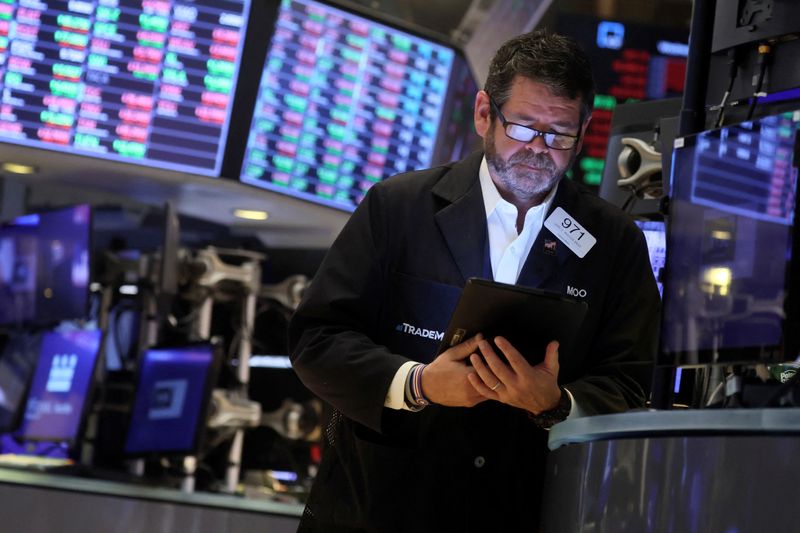By Stephen Culp
NEW YORK (Reuters) - Wall Street closed sharply lower in a broad sell-off on Tuesday as dire consumer confidence data dampened investor optimism and fueled worries over recession and the looming earnings season.
The S&P and the Nasdaq fell about 2% and 3% respectively, with Apple Inc (NASDAQ:AAPL), Microsoft Corp (NASDAQ:MSFT) and Amazon.com (NASDAQ:AMZN) weighing the heaviest. The blue-chip Dow shed about 1.6%.
"Markets were fine today until the consumer confidence number came out," said Peter Tuz, president of Chase Investment Counsel in Charlottesville, Virginia. "It was weak and markets immediately began selling off."
With the end of the month and the second quarter two days away, the benchmark S&P 500 is on track for its biggest first-half percentage drop since 1970.
All three indexes are on course to notch two straight quarterly declines for the first time since 2015.
"At some point this aggressive selling is going to dissipate but it doesn't seem like it's going to be anytime soon," said Tim Ghriskey, senior portfolio strategist Ingalls & Snyder in New York.
Data released on Tuesday morning showed the Conference Board's consumer confidence index dropping to the lowest it has been since February 2021, with near-term expectations reaching its most pessimistic level in nearly a decade.
The growing gap between the Conference Board's "current situation" and "expectations" components have widened to levels that often precede recession:
Graphic: Consumer confidence - https://graphics.reuters.com/USA-STOCKS/gkvlgeqrgpb/consumerconf.png
The Dow Jones Industrial Average fell 491.27 points, or 1.56%, to 30,946.99, the S&P 500 lost 78.56 points, or 2.01%, to 3,821.55 and the Nasdaq Composite dropped 343.01 points, or 2.98%, to 11,181.54.
Ten of the 11 major sectors in the S&P 500 ended the session in negative territory, with consumer discretionary suffering the largest percentage loss. Energy was the sole gainer, benefiting from rising crude prices. [O/R]
With few market catalysts and market participants gearing up for the July Fourth holiday weekend, the day's sell-off cannot be blamed entirely on the Consumer Confidence report, said Tom Hainlin, national investment strategist at U.S. Bank Wealth Management in Minneapolis, Minnesota.
"It’s hard to attribute (market volatility) to one economic data point with so much noise around portfolio rebalancing at quarter-end," Hainlin said.
"There’s not a lot of new information out there and yet you see this volatile stock environment," he said, adding that there will not be much new information until companies start earnings.
With several weeks to go until second-quarter reporting commences, 130 S&P 500 companies have pre-announced. Of those, 45 have been positive and 77 have been negative, resulting in a negative/positive ratio of 1.7 stronger than the first quarter but weaker than a year ago, according to Refinitiv data.
Nike Inc (NYSE:NKE) slid 7.0% following its lower than expected revenue forecast.
Shares of Occidental Petroleum Corp (NYSE:OXY) advanced 4.8% after Warren Buffett's Berkshire Hathaway (NYSE:BRKa) Inc raised its stake in the company.
Declining issues outnumbered advancing ones on the NYSE by a 2.28-to-1 ratio; on Nasdaq, a 2.70-to-1 ratio favored decliners.

The S&P 500 posted one new 52-week high and 29 new lows; the Nasdaq Composite recorded 29 new highs and 131 new lows.
Volume on U.S. exchanges was 11.54 billion shares, compared with the 12.99 billion average over the last 20 trading days.